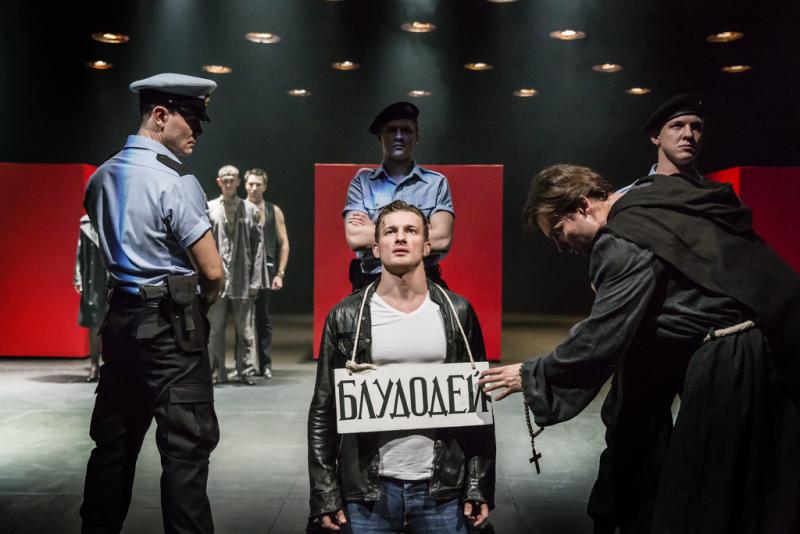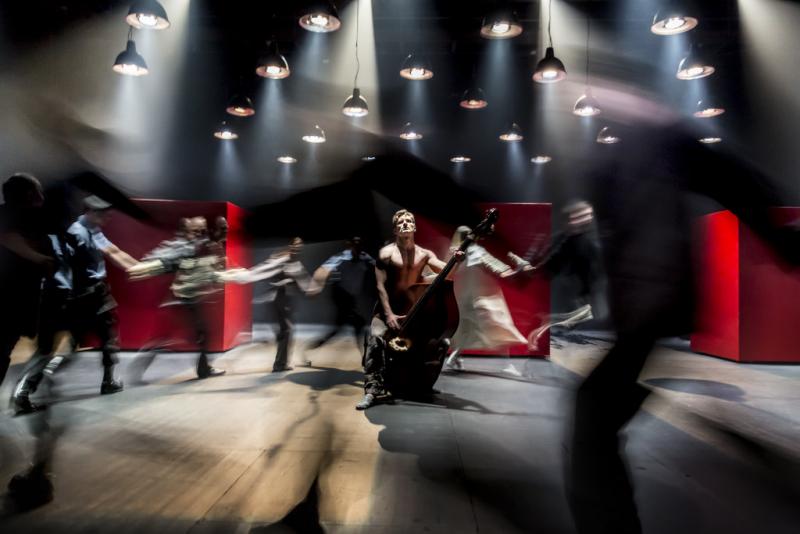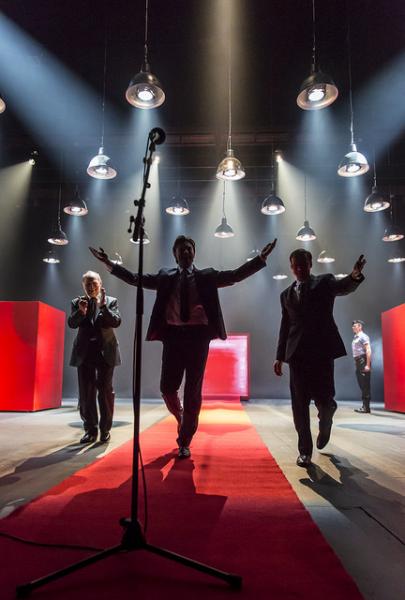A performance of publics and power in Measure for Measure
It is the connectivity of the people who populate Cheek by Jowl and Pushkin Theatre’s production of Measure for Measure (directed by Declan Donnellan) which is most striking. The play opens silently, as the group of actors, bunched tightly together, move in formation across and around the stage. They become separated from one figure – the Duke – who controls them. But it is increasingly clear that his hold on power is not complete; at one point the crowd descend to their hands and knees, crawling towards the Duke (Alexander Arsentyev) like predators preparing to attack. He stops them with a panicked gesture – a gesture he only half-believes will work. This is the impetus for the play’s action: the Duke, too lenient with his people, temporarily transfers his power to Angelo (Andrei Kuzichev), who rules in the Duke’s supposed absence.

This small crowd or microcosmic public remain throughout the performance, sometimes broken up, sometimes reforming, sometimes losing a member or two, but eventually coming back together. When the novice Isabella weeps, the crowd, bunched at the opposite side of the stage, weep too, beating their heads as she beats hers. When the Duke puts on and puts off his disguise, it is with the aid of the crowd, who in the final scene present the Duke with the suitcase containing his costume. A broader sense of public is invoked when the characters gesture outwards beyond the fourth wall. When Isabella – in a strong, passionate performance by Anna Khalilulina - threatens to make public Angelo’s request that she relinquish her virginity to him in exchange for her brother Claudio’s life, Angelo asks: ‘Who will believe thee, Isabel?’ (2.4.154) He gestures outwards to the audience, waiting in silence, daring us to say something to support Isabella. Of course, nobody does, because as well-behaved spectators we are cued to act – or not act – in certain ways. We are complicit in Angelo’s corruption, because the production spotlights the inherent connections between public and private, individual and group, politics and performance. It reinforces the play’s interest in the mobility of power; the way it moves between individuals, and the way it is a kind of chimera perpetuated by the people who obey it.


